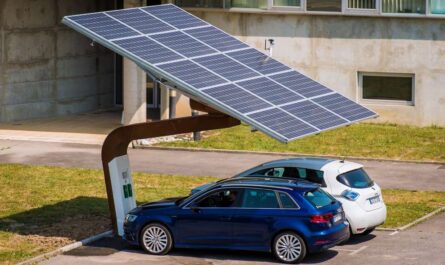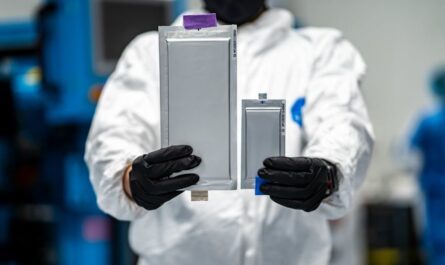 Introduction
Introduction
Hydrogen fuel cell vehicles utilize hydrogen fuel cell technology to generate electricity from hydrogen to power their electric motors. A fuel cell works by electrochemically combining hydrogen and oxygen to produce electricity, water, and heat. In a fuel cell vehicle, hydrogen gas is stored in high-pressure tanks and fed into the fuel cell stack. Within the fuel cell, hydrogen atoms are split from molecules and electrons are released. The released electrons power the vehicle’s electric motor, while the protons and electrons combine with oxygen to create water vapor and heat. This process produces zero direct emissions from the vehicle.
Applications of Fuel Cell Technology
While fuel cell vehicle are still in the early commercialization phase, automakers continue developing passenger cars, commercial trucks, buses, trains, watercraft, and other transportation applications powered by hydrogen fuel cells. For passenger vehicles, automakers like Toyota, Hyundai, Honda, and BMW have brought several hydrogen fuel cell car models to market. Transit agencies are also testing hydrogen fuel cell buses that offer longer ranges and faster refueling over electric buses. Train and subway operators are exploring the use of hydrogen fuel cell multiple units to reduce emissions from diesel trains. On the water, hydrogen fuel cell technology is being developed for ferry boats, cargo ships, and other maritime vessels. Overall, hydrogen fuel cells enable zero-emission operation for a wide variety of transportation needs across land, sea, and rail.
Refueling Fuel Cell Vehicles
One advantage of fuel cell vehicles is the ability to rapidly refuel like conventional gasoline vehicles. Refueling a hydrogen fuel cell car involves connecting the vehicle to a hydrogen fueling station where high-pressure hydrogen gas can be pumped into the vehicle’s storage tanks in just a few minutes, providing a range of over 300 miles. Currently there are over 1,000 hydrogen refueling stations operational around the world, with the highest concentrations in California, Japan, Germany, and South Korea. Automakers are working with energy companies to establish a network of hydrogen stations to support the growth of fuel cell vehicles. While the hydrogen refueling infrastructure is still developing, it continues expanding to handle increasing numbers of fuel cell cars and trucks on the roads.
Efficiency and Driving Range of Fuel Cell Vehicles
Fuel cell vehicles have compelling efficiency advantages over gasoline and diesel vehicles. Fuel cells can achieve over 60% fuel-to-wheel efficiency compared to just 20-30% for internal combustion engines. This boosts the driving range potential of fuel cell EVs. Leading fuel cell car models now provide over 300 miles of driving range on a single fill of gaseous hydrogen. This compares favorably to the 200-300 mile range of current battery electric vehicles. With efficiencies of up to 80% for onboard hydrogen fuel reforming, synthetic fuels derived from renewable energy could theoretically propel fuel cell cars over 500 miles per fill. Automakers are constantly upgrading fuel cell performance and storage capacity to achieve driving ranges competitive with gasoline cars.
Lifecycle Emissions of Hydrogen Fuel Cell Vehicles
While fuel cell vehicles emit only water from their tailpipes, the overall lifecycle emissions depend on how the hydrogen is produced. However, future prospects for clean hydrogen production are promising. Currently around 50% of hydrogen is produced from natural gas via steam-methane reforming. This process emits CO2, but combined with carbon capture could achieve near-zero emissions. Electrolysis using renewable electricity like hydropower, solar, and wind promises zero-carbon hydrogen production. Biomass gasification and thermochemical water-splitting are additional emerging clean hydrogen pathways. Fuel cell EVs could even be powered with synthetic hydrogen-based carbon-neutral liquid fuels produced from renewable energy. Overall, fuel cell vehicles offer a compelling pathway towards emissions-free transportation across their entire lifecycles if powered by renewable or low-carbon hydrogen.
Advancing Commercial Viability of Fuel Cell Technology
Manufacturers continue advancing fuel cell systems to boost power output, reliability, durability, and bring down costs. Current high-volume production targets for automakers aim to cut hydrogen fuel cell stack manufacturing costs to around $40/kW from over $275/kW today. This cost reduction, along with economies of scale, mass production techniques, and commodity materials will be key to achieving total fuel cell vehicle costs competitive with battery EVs within the next decade. In the meantime, governments worldwide are introducing incentive programs, research funding, and hydrogen refueling infrastructure investments to encourage early adoption of fuel cell cars and trucks. Industry players are also collaborating to standardize fuel cell technologies, streamline manufacturing, and accelerate the build-out of the hydrogen economy worldwide. With continued improvements, fuel cell vehicles are poised to achieve broader commercialization in the coming years.
Role of Hydrogen in the Global Energy Transition
Beyond transportation, hydrogen can support clean energy applications across multiple sectors worldwide. As a carrier of renewable energy, hydrogen can enable long-term energy storage and seasonal shifting of surplus solar and wind power. Hydrogen can also replace natural gas in industrial processes that are difficult to electrify like steelmaking, refining, chemical production and more. When blended with natural gas, hydrogen boosts energy content and lowers emissions from existing gas infrastructure like power plants, commercial boilers and home heating appliances. Hydrogen-powered fuel cells also provide clean backup power for data centers,cellular towers, hospitals and other critical facilities. Finally, hydrogen fuel cell ships and aircraft could significantly reduce emissions from hard-to-abate maritime and aviation industries. A global shift towards sustainable “hydrogen economies” powered by renewable energy shows tremendous promise to decarbonize vast portions of our energy and transportation systems.
*Note:
- Source: Coherent Market Insights, Public sources, Desk research
- We have leveraged AI tools to mine information and compile it




